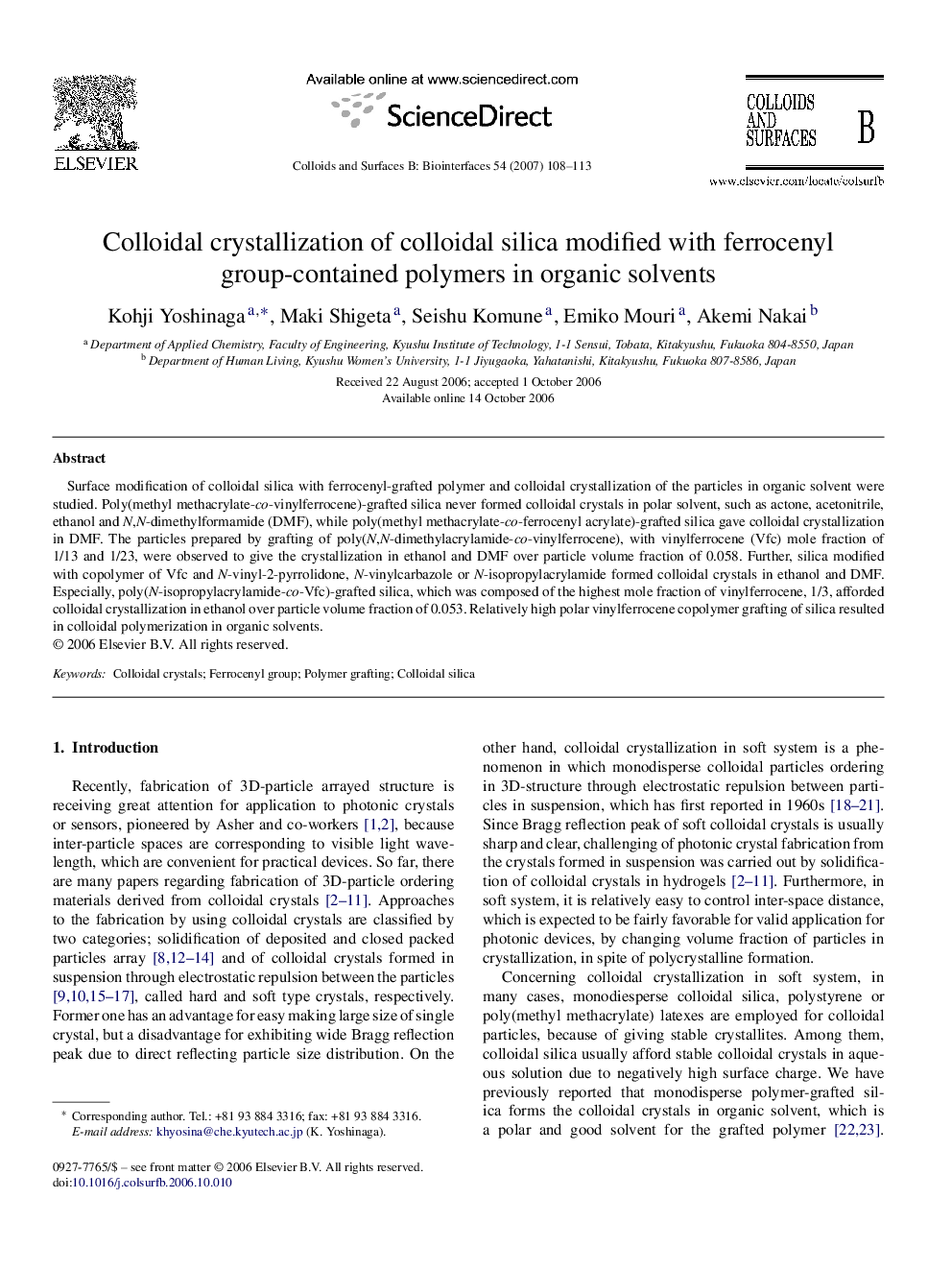| Article ID | Journal | Published Year | Pages | File Type |
|---|---|---|---|---|
| 602783 | Colloids and Surfaces B: Biointerfaces | 2007 | 6 Pages |
Surface modification of colloidal silica with ferrocenyl-grafted polymer and colloidal crystallization of the particles in organic solvent were studied. Poly(methyl methacrylate-co-vinylferrocene)-grafted silica never formed colloidal crystals in polar solvent, such as actone, acetonitrile, ethanol and N,N-dimethylformamide (DMF), while poly(methyl methacrylate-co-ferrocenyl acrylate)-grafted silica gave colloidal crystallization in DMF. The particles prepared by grafting of poly(N,N-dimethylacrylamide-co-vinylferrocene), with vinylferrocene (Vfc) mole fraction of 1/13 and 1/23, were observed to give the crystallization in ethanol and DMF over particle volume fraction of 0.058. Further, silica modified with copolymer of Vfc and N-vinyl-2-pyrrolidone, N-vinylcarbazole or N-isopropylacrylamide formed colloidal crystals in ethanol and DMF. Especially, poly(N-isopropylacrylamide-co-Vfc)-grafted silica, which was composed of the highest mole fraction of vinylferrocene, 1/3, afforded colloidal crystallization in ethanol over particle volume fraction of 0.053. Relatively high polar vinylferrocene copolymer grafting of silica resulted in colloidal polymerization in organic solvents.
